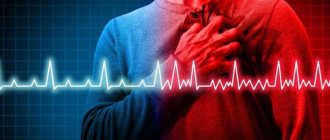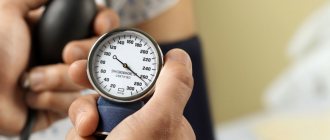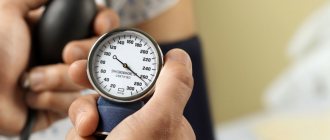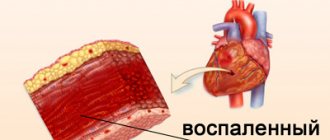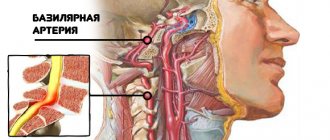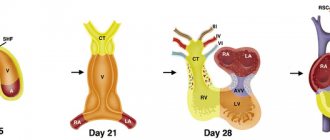Low heart rate: what to do?
Bradycardia, that is, a decrease in heart rate, is a symptom that can be caused by both physiological characteristics of the body and dangerous pathologies. What pulse is considered normal and how not to miss the development of complications was told by a cardiologist.
The questions were answered by Nino Revazovna Malania, a cardiologist of the 1st category of the Federal State Budgetary Institution “National Medical Research Center named after. acad. E.N. Meshalkin" of the Ministry of Health of Russia, Member of the ESC (European Society of Cardiology) and RKO (Russian Society of Cardiology).
– Bradycardia – what is this condition?
– The heart is an autonomous and self-sufficient organ that works without our participation. It is forced to contract and push blood through the vessels by the so-called “pacemakers” - the sinus node and the atrioventricular node, which produce electrical impulses, under the influence of which the heart contracts.
The National Institutes of Health (NIH) defines bradycardia as a heart rate <60 beats per minute in adults other than well-trained athletes. However, in population studies, a lower threshold of <50 beats per minute is often used.
In an analysis of four population-based studies from the Netherlands, adults aged 20 to 90 years had the lowest second percentile heart rate ranging from 40 to 55 beats per minute, depending on gender and age.
Sinus pauses of 2 seconds and 3 seconds have been described during 24-hour ambulatory ECG monitoring in healthy elderly patients and distance runners, respectively. Based on the available evidence, guidelines have been developed1 where the presence of a sinus rate <50 beats per minute and/or a sinus pause >3 seconds can be used to diagnose sinus node dysfunction. The only reason to consider any treatment for sinus node dysfunction is the presence of symptoms.
– What symptoms accompany this condition?
– In the clinical picture, there are two main groups of symptoms: cerebral and cardiac. Permanent and long-term bradycardia can be manifested by fatigue, increased fatigue, lethargy, apathy, and decreased mental abilities.
The consequences of cerebral hypoperfusion are most clearly manifested: in acute disorders, sudden dizziness and confusion may occur, and in more severe cases, presyncopal (or presyncope) and syncope (or loss of consciousness) conditions, up to a full-blown picture of Morgania-Adams-Stokes attacks.
Bradycardia can lead to aggravation of coronary heart disease, arterial hypertension and chronic heart failure. Clinically, decreased tolerance to physical activity with the usual manifestations in these cases in the form of rapid fatigue and shortness of breath.
Bradycardia can become a serious problem because the heart does not pump enough oxygen-rich blood into the body. However, in some people, bradycardia does not cause symptoms or complications.
During deep sleep, the heart rate may drop below 60 beats per minute, which is physiological. And in physically active adults (and athletes), resting heart rates are often below 60 beats per minute, which is normal in this case.
– What factors can influence a decrease in heart rate?
– When collecting anamnesis from the patient, it is necessary to clarify the frequency, time, duration, timing of occurrence, factors that provoke and mitigate symptoms, on the basis of which bradycardia can be suspected. It is important to note the relationship of symptoms to medications, food, medical interventions, emotional distress, changes in body position, exercise, or other factors (urination, defecation, coughing, prolonged standing, turning the head) for the differential diagnosis.
The following factors can affect sinus rhythm and cause bradycardia:
- increased tone of the parasympathetic nervous system; increased intracranial pressure (for example, with cerebral edema, tumor, stroke);
- sclerotic changes in the muscular layer of the heart, which affects the sinus node;
- exposure to certain medications for the treatment of cardiovascular diseases (for example, beta blockers, antiarrhythmics - drugs that affect the heart rate, etc.);
- pathology of the thyroid gland (for example, hypothyroidism - decreased function of the thyroid gland);
- some diseases of the cardiovascular system (atherosclerosis of the coronary vessels, ischemic heart disease, cardiosclerosis, heart attack, endocarditis, myocarditis, post-infarction scars, etc.);
- risks of bradyarrhythmia after heart surgery (after coronary artery bypass grafting, open heart valve surgery, transcatheter aortic valve implantation, surgery for congenital heart defects, heart transplantation, after RFA treatment for cardiac arrhythmias);
- disturbance of the metabolism of minerals and electrolytes involved in conducting electrical impulses in the heart (for example, hypokalemia);
— obstructive sleep apnea syndrome (stopping breathing during sleep);
— infectious and inflammatory diseases (rheumatism, systemic lupus erythematosus);
- toxic effects (for example, lead poisoning, nicotine).
– In what cases can bradycardia be a normal variant?
– If nothing bothers a person clinically against the background of bradycardia, then this may be a variant of the norm, and the absence of clinical symptoms may indicate that the brain is adapted to such a rhythm - that is, this is a kind of “norm” for a particular person.
As I already said, during deep sleep, the heart rate can drop below 60 beats per minute, which is physiological. And in physically active adults (and athletes), the resting heart rate is often below 60 beats per minute, which is the norm in this case and is regarded as physiological bradycardia.
– What should be the reason for visiting a doctor?
– If the pulse has become <60 per minute at rest without pathological effects on the pacemaker of the heart (taking medications that affect the heart rhythm, toxic effects, diseases of the cardiovascular system), although before this it was 70-80, or you have clinical complaints (weakness, fatigue, dizziness, lightheadedness, fainting, etc.) - this may indicate serious heart problems and you should first consult a therapist for examination.
What does the general practitioner need to assess? Clinical picture of the patient and anamnesis; 12 channel ECG; Holter monitoring; echocardiography. Other additional research methods at the second stage of the examination will be carried out according to the indications of the arrhythmologist.
– What could be a critical decrease in heart rate that requires emergency care?
– Severe sinus bradycardia is considered to be a heart rate <40 per minute at rest, which can lead to the development of heart failure and is a life-threatening condition (possible development of arrhythmogenic shock, syncope, loss of consciousness). These patients are indicated for emergency implantation of a pacemaker in a cath lab.
The decision to implant a pacemaker is made by an arrhythmologist after a thorough examination of the patient based on clinical and medical data.
- 2018 ACC/AHA/HRS Guideline on the Evaluation and Management of Patients With Bradycardia and Cardiac Conduction Delay: A Report of the American College of Cardiology/American Heart Association Task Force on Clinical Practice Guidelines and the Heart Rhythm Society
2. Clinical recommendations “Bradyarrhythmias and conduction disorders” of the Ministry of Health of the Russian Federation 2021
Features of age imbalance
In elderly hypertensive patients, a decrease in heart rate is associated with age-related changes in the myocardium due to the formation of connective tissue foci in the area of the heart muscle. As the pathology progresses, cardiosclerosis develops, a complication of which is a deterioration in the contractile activity of the heart and deformation of the conduction system, which leads to a slowdown in heart contractions even with high blood pressure. This process also provokes metabolic disorders, which is typical for older people. Heart tissues do not require large amounts of oxygen, so the myocardium pumps blood at low intensity.
Patients over the age of 60 are susceptible to bradycardia; the heart rate decreases to 60–55 beats/min.
Diagnostic measures
A hypertensive patient who often exhibits a small pulse during attacks of arterial hypertension should consult a cardiologist to determine the cause of the disorder. To identify concomitant diseases, you should undergo the following studies:
- electrocardiography;
- phonocardiography;
- clinical blood and urine analysis;
- biochemical analysis for hormones;
- bacteriological research.
Important! To independently monitor their pulse, patients are advised to purchase an electric tonometer that displays blood pressure and heart rate. This allows you to detect a small pulse throughout the day.
The first signs of disorder
With a slight dissonance between pressure and pulse, patients identify the main complaints of symptoms characteristic of hypertension. However, pronounced deviations from normal indicators cause a deterioration in the general condition.
An attack of dizziness against the background of a sharp decrease in heart rate can cause fainting
Characteristic signs of the pathological condition are:
- Dizziness (lack of oxygen supply to brain tissue).
- Dyspnea (disorder of normal gas exchange in the pulmonary system).
- Weakness (insufficient blood supply to muscle tissue leads to insufficient contraction).
- Severe fatigue (impaired metabolic reactions contribute to a deficiency of energy reserves in muscle cells and the accumulation of special chemicals in them).
- Pain behind the sternum (occurs with a significant decrease in the pulse rate).
All signs indicate the development of concomitant pathologies, and therefore require very strict monitoring and additional diagnostics from specialists.
Diagnostics
Before making a diagnosis, it is necessary to undergo a series of studies that will confirm or refute the disease. Consultation with a cardiologist is necessary. The doctor begins by interviewing and examining the patient. After collecting anamnesis, the patient is sent for instrumental examination. Additionally, studies are prescribed:
- ECG;
- ECHO CG;
- MRI;
- chest x-ray;
- 24-hour Holter monitoring;
- load tests;
- consultation with a neurologist.
Timely diagnosis allows you to identify the disease, stop it and begin the necessary treatment.
Prevention
Prevention of a weak pulse involves eliminating the underlying disease that caused the bradycardia. It is necessary to undergo an annual examination and consult a doctor. Follow all his recommendations and assignments. Follow the dosage and regimen of taking medications. Lead a conscious lifestyle:
- eat right and watch your weight;
- engage in physical therapy;
- to refuse from bad habits.
For prevention purposes, never resort to traditional medicine without first consulting your doctor. Against the background of a weak pulse, high blood pressure may occur. And most recipes involve foods that can increase blood pressure. This will only harm your health and cause additional complications.
The most reliable method of prevention is regular examination. There are several programs at our center. You can get acquainted with them by following the link.
Complications of arrhythmia
.
A number of heart rhythm disorders can increase the risk of developing conditions and diseases such as:
- Stroke
. When the atria fibrillate, they are unable to adequately pump blood to the ventricles. Slowing blood flow in the atria leads to the formation of clots. If a small piece breaks off from the clot, it can enter the bloodstream, spread throughout the body and clog the cerebral arteries, causing the development of ischemic stroke, i.e. damage or death of part of the brain, and sometimes leads to death. - Congestive heart failure
. Due to a prolonged period of bradycardia or tachycardia, such as atrial fibrillation, the heart may not pump efficiently. By controlling your heart rate, you can improve left ventricular contractility and reduce signs of heart failure.
How to get treatment at the Scientific Center named after.
A.N. Bakuleva? Online consultations
Unconventional methods of treatment
Folk remedies based on the use of medicinal herbs and plants will help increase heart rate and stabilize blood pressure.
Natural medicines from yarrow, peppermint, and lily of the valley will help raise the level of pulse contractions
You can achieve an increase in myocardial contractile activity using the following recipes:
- Lemon-garlic mixture. To prepare, you need to squeeze the juice from 5 lemons, then chop half a head of garlic, add 2 tbsp. l. honey, mix thoroughly. Leave for 24 hours, take 1 tsp. 4 times a day before meals.
- Radish juice. Remove the top of the vegetable, take out a small amount of pulp so that a cavity is formed. Add 1 tbsp to the well. l. honey, leave for 2-3 hours. Take the resulting nectar 3 times a day.
- Nut mixture. In a container, mix 1 glass of sesame oil, 500 g. chopped walnuts and 1 tbsp. Sahara. Place the sliced lemon in a separate container and pour boiling water over it. Combine the components, mix together, leave for about 24 hours in a place inaccessible to sunlight. Take 3 times a day.
The ratio of heart rate and pressure is an important diagnostic criterion in assessing the condition of a hypertensive patient, so some disorders may indicate the development of concomitant diseases. In some cases, a minor deviation is a physiological process or the body's reaction to certain medications. The course of the pathology depends on the cause of occurrence and the functional state of the vascular and cardiac systems. Timely diagnosis will help normalize the patient’s condition and slow down the progression of the disease.
